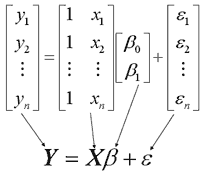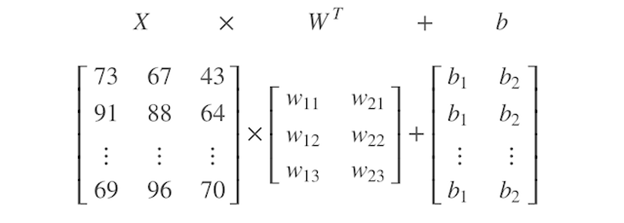Your first step towards deep learning

(Source:https://luckyhasae.com/installing-pytorch-anaconda/)
In my previous posts we have gone through
Here we will try to solve the classic linear regression problem using pytorch tensors.
1 What is Linear regression ?
y = Ax + B.
A = slope of curve
B = bias (point that intersect y-axis)
y=target variable
x=feature variable

Linear regression matrix (Source : https://online.stat.psu.edu/stat462/node/132/)
1.1 Linear regression example 1:
We’ll create a model that predicts crop yields for apples and oranges (target variables) by looking at the average temperature, rainfall and humidity (input variables or features) in a region. Here’s the training data:

(Source: https://www.kaggle.com/aakashns/pytorch-basics-linear-regression-from-scratch)
yield_apple = w11 * temp + w12 * rainfall + w13 * humidity + b1
yield_orange = w21 * temp + w22 * rainfall + w23 * humidity + b2
Learning rate of linear regression is to find out these w,b values to make accurate predictions on unseen data. This optimization technique for linear regression is gradient descent which slightly adjusts weights many times to make better predictions.Below is the matrix representation

#python #pytorch #linear-regression #neural-networks #deep-learning
